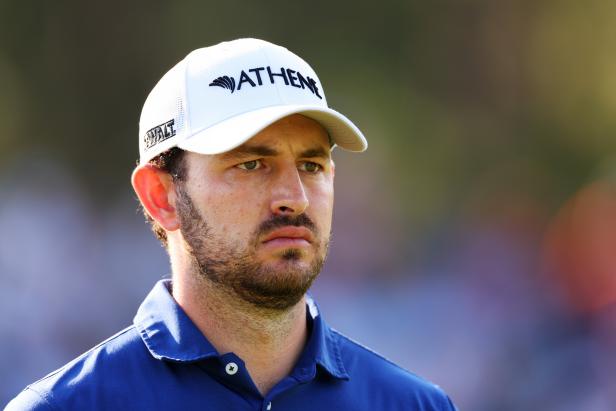Golf
U.S. Open 2024: Patrick Cantlay is the antihero golf needs

PINEHURST, N.C. — Is Patrick Cantlay a crank, or whatever R-rated synonym you want to associate with that description? Depends who you ask. Rory McIlroy thinks so, and we know because he said as much, while fellow critics point to his slow play and rumors of Ryder Cup protests and attempted boardroom hijackings and wonder, Who the hell does he think he is? Cantlay’s defenders—of which there are many—assert he is misunderstood, that he’s not combating commissioner Jay Monahan and tour leadership just to be difficult but doing so because Cantlay believes he has a duty to his fellow players to do the right thing, no matter the cost.
“I think I try to compartmentalize as much as I can,” Cantlay said about his work in the tour’s attempt to unify the professional sport. “I do feel a responsibility to do the right thing for the membership and do my best in my capacity as a Policy Board member. That’s really the driving force, driving force behind all the decisions I make on that front.”
That at least is how Cantlay frames it. But once the game’s most popular player calls you a “****” it’s a hard label to shed, and given McIlory’s backing wherever he goes it stands to reason some fans may view Cantlay in a similar light. Which is what makes his presence on this leaderboard wonderful.
Cantlay is in the mix at this U.S. Open after rounds of 65 and 71, one back of Ludvig Aberg heading into the weekend at Pinehurst. On its own, this is noteworthy. For all of Cantlay’s accolades—eight tour wins, FedEx Cup title, Team USA appearances—the man has a major-sized hole in the resume. In 29 previous major starts, Cantlay has just one top-five finish, and that was of the backdoor variety. The sport is not kind to stars who shrink when the spotlight is at its brightest. Their achievements outside the majors are nothing more than popcorn muscles. It hasn’t been the best of seasons for Cantlay, but there’s no question he has the ceiling and talent and belief to be a major champ. He is two rounds away from burying that stigma in the Carolina sandscapes.
However, with all due respect to Cantlay and his story, what he may do is secondary to the idea that McIlroy and his many fans don’t want to see him do it.
One of the sneaky casualties of professional game’s civil war has been the disappearance of week-to-week villains. There weren’t many black hats to begin with, and the ones that existed have almost all defected to that little upstart circuit. For the most part those players have faded from consciousness, and one of the few that has been relevant is now one of the biggest draws in golf. Golf is suffering a shortage of divisive figures.
Which is a shame. Having a foil makes for richer, fuller narratives, and sports hate can be just as satisfying as fandom. But it takes a special gusto to be a worthy adversary. The reason Cantlay stirs emotions is because of how he strays from the norm. He’s occasionally disruptive, but also comfortable with who he is and seemingly unbothered by what anyone else thinks. Above all, he’s formidable, as a player and a personality, his fortitude on display in Rome when he stared down an entire continent that mocked him on Saturday afternoon only to tip his imaginary hat right back in their faces. That he did it with the disposition of a customer asking to speak to the manager was a chef’s kiss.
And make no mistake, while Pinehurst will not be as hostile as Italy, the galleries will be cheering others. Tony Finau, Tom Kim, Akshay Bhatia, Bryson DeChambeau, Aberg and, yes, McIlroy. McIlroy, golf’s favorite son, and the guy who called Cantlay a d***. The thought of those two paired together on Sunday with the U.S. Open on the line is everything a major championship promises, and Cantlay is a major part of that equation. “The more successful the villain,” Alfred Hitchcock once said, “the more successful the picture.”










